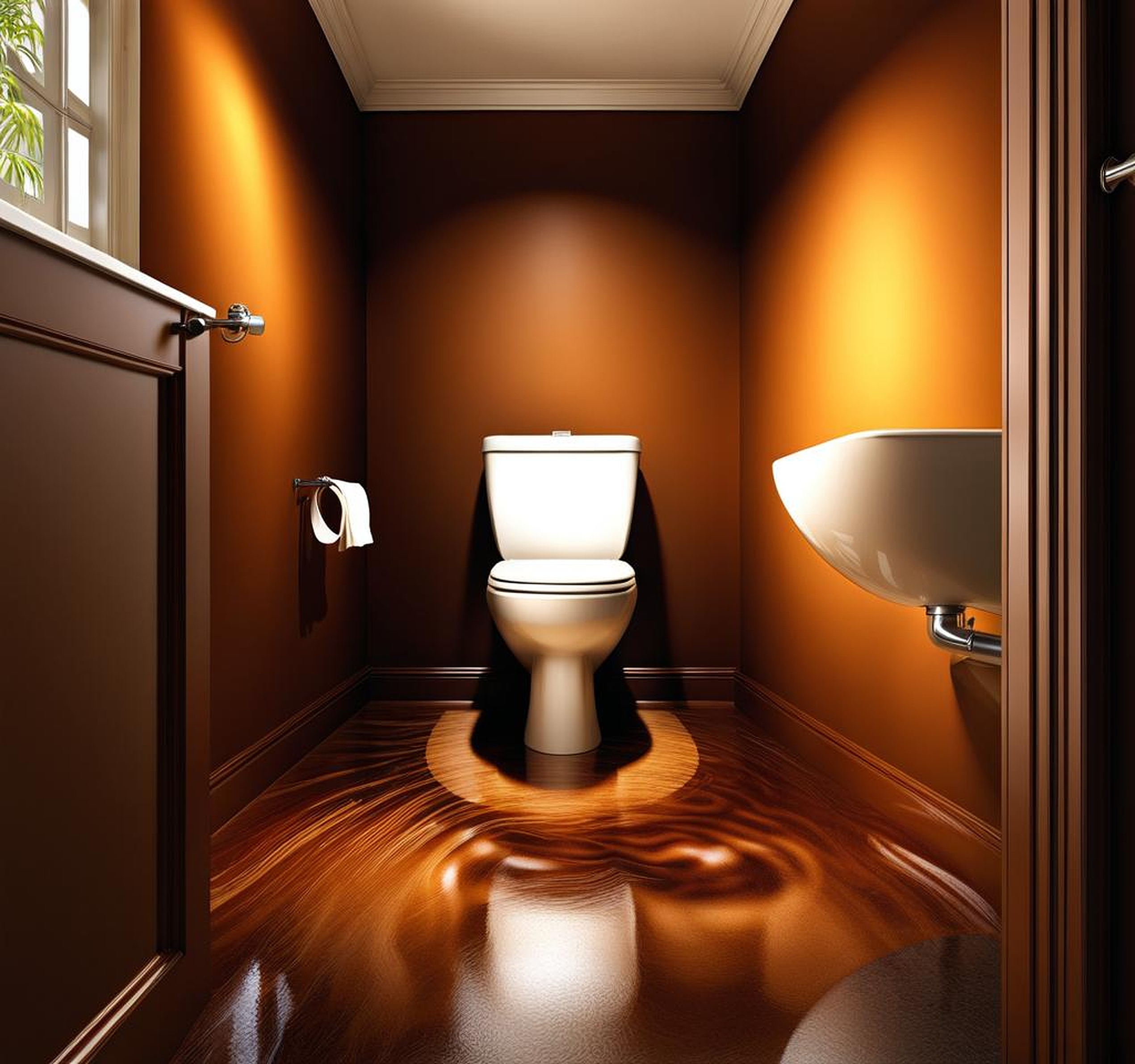You’re going to flush your toilet, but it’s going to be a mess. It’s a shocking sight that can send shivers down your spine and raise concerns about the state of your plumbing system. The sudden appearance of brown water in your toilet is an issue that demands immediate attention, as it could signify underlying problems ranging from a simple clog to more severe issues like a sewer backup or a breach in the pipes.
Causes of Sudden Brown Water in Toilet
Brown water in your toilet bowl can stem from various sources, and identifying the root cause is crucial for addressing the problem effectively. Some of the most common culprits include:

1. Corrosion in pipes: Over time, the pipes in your plumbing system can corrode, particularly if they are made of older materials like iron or lead. As these pipes rust, they release iron oxide, giving the water a brown or reddish tinge.
2. Sediment buildup: Sediment and mineral deposits can accumulate in the pipes, especially if you live in an area with hard water. When disturbed, these particles can discolor the water, causing it to appear brown or cloudy.
3. Water main breaks or disturbances: If there’s a break or disturbance in the municipal water main that supplies your home, it can stir up sediment and cause discoloration in the water flowing through your pipes.
4. Sewer line issues: A clogged or damaged sewer line can cause wastewater to back up into your toilet, resulting in brown, foul-smelling water. This scenario is particularly concerning as it may indicate a more significant issue with your sewer system.
Signs and Symptoms of Brown Water in Toilet
While the most apparent sign of a problem is the discolored water itself, there are other telltale signs that can help you identify the source of the issue. Here are some common symptoms to watch out for:
- Brown or rusty-colored water in other fixtures, like sinks or bathtubs
- A metallic or earthy taste or odor in the water
- Low water pressure or fluctuations in water flow
- Gurgling or bubbling sounds coming from the toilet or drains
- A sudden sewage-like smell emanating from the toilet or drains
It’s important to note that some of these symptoms, like a sewage odor or gurgling sounds, can indicate a more serious issue such as a sewer line backup, which requires immediate attention from a professional plumber.
Determining the Source of Brown Water
To effectively address the issue of brown water in your toilet, you’ll need to pinpoint the source of the problem. Here are a few steps you can take:
1. Check other fixtures: If the brown water is isolated to just your toilet, it could be a localized clog or issue with the toilet’s plumbing. However, if other fixtures in your home are also affected, the problem is likely more widespread and may involve the main water supply line or municipal water system.
2. Inspect the water heater: If the discoloration is only present in the hot water, the issue could be related to the water heater itself. Sediment buildup or corrosion in the tank can cause the water to turn brown.
3. Flush the system: In some cases, flushing the pipes can help clear out any sediment or debris that may be causing the discoloration. Start by running all the cold water taps in your home for several minutes to see if the water clears up.
4. Hire a professional plumber: If the problem persists or you suspect a more serious issue, such as a sewer line backup, it’s best to call in a professional plumber. They have the tools and expertise to diagnose and address the root cause of the problem.
Troubleshooting Brown Water Issues
Once you’ve identified the source of the brown water, you can take steps to address the issue. Here are some troubleshooting tips:
1. For a localized clog or toilet issue, try using a plunger or toilet auger to dislodge any blockages. If the problem persists, you may need to remove and inspect the toilet itself.
2. If the issue is related to corrosion in the pipes, you may need to consider replacing the affected sections of the piping system. This can be a major undertaking, so it’s best to consult with a professional plumber.
3. If the problem stems from the water heater, you may need to flush the tank or replace the anode rod to prevent further sediment buildup and corrosion.
4. In cases of a municipal water main issue, you’ll need to contact your local water utility company to report the problem and request assistance.
5. If you suspect a sewer line backup, do not attempt to address the issue yourself. Sewage backups can pose serious health risks and should be handled by a professional plumbing service with the proper equipment and safety protocols.
While some causes of brown water may be out of your control, there are steps you can take to help prevent future occurrences:
1. Install water filtration systems: Whole-house water filters or point-of-use filters can help remove sediment and other contaminants from your water supply, reducing the risk of discoloration.
2. Regularly maintain your plumbing system: Schedule routine inspections and cleanings of your pipes, water heater, and other plumbing components to prevent buildup and corrosion.
3. Consider upgrading old pipes: If your home has aging pipes made of materials like iron or lead, consider replacing them with more modern materials like PVC or copper to reduce the risk of corrosion.
4. Monitor water pressure and flow: Sudden changes in water pressure or flow can be an early indicator of a potential issue, allowing you to address it before it leads to discolored water or more significant problems.
Remember, addressing the sudden appearance of brown water in your toilet promptly is crucial not only for maintaining a properly functioning plumbing system but also for ensuring the health and safety of your household.